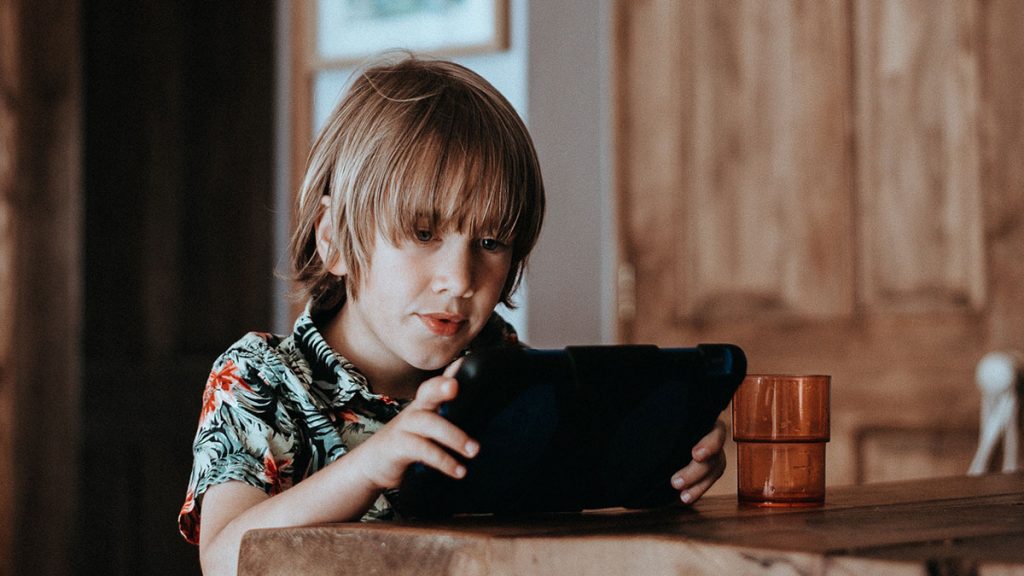Screen Time Guidance

SCREEN TIME GUIDANCE: WHAT CAN ADULTS DO TO HELP CHILDREN NAVIGATE TECHNOLOGY?
Is social media changing our brains? This 3 minute video by AsapScience describes how social media can affect us physiologically.
The video underscores why it’s so critical that families and educators know strategies that can help limit potential risks to childrens’ social, emotional, and physical health. Below you’ll find specific strategies for different age groups that cover these three main recommendations:
- Limit Screen Time
- Provide Alternatives
- When you do use technology, know how to use it for learning
Here are some specific activities for educators and families of K-12 children:
What can educators do?
- Give a presentation at a family night using ready-made slides from Common Sense Media. Here is an example of one, called Social Media, Gaming, and Mental Health Presentation for Parents & Families.
- Share these parent packets about technology and apps for home learning.
- Explore Project Based Learning resources from the Buck Institute or Edutopia for alternatives to technology and/or ways to integrate technology into authentic learning opportunities.
What can families do?
- Learn more about Screen Time boundaries from Common Sense Media’s parent resources.
- Use technology for learning. Sign up for Readworks as a parent/guardian. There is a pop-up window that will ask you to donate – it is optional. Learn more about how to access this free library of reading material at all grade levels, including ebooks with rich illustrations and audio narration.
- Read this Colorin Colorado article, “Help Your Child Learn to Read,” to get more ideas about reading with your children.
Limiting young children’s screen time is especially important. Over the past three years, The Amercian Academy of Pediatrics and the World Health Organization have decreased the amount of recommended screen time for children two to five years old. Both currently give one hour or less of screen time per day as the guideline for children between two and five years old and both advise no screen time for children under two.
- Children learn by actively engaging with people and their environment. Screen time can create a passive state that limits these learning opportunities and can have a negative effect on brain development, social skills, attention span, sleep and physical health according to the Mindd Foundation.
- Here is a pocket guide from Business Insider to screentime for children 5 and under.
- And here are Screen Time Guidelines for infant-elementary.
What can families do?
- Learn about child development and how electronics can affect children’s brains. Here is a “Mini-Parenting Master Class,” from UNICEF about why baby talk is important. Also, check out this “Baby Talk for Parents” interactive course from the H&M Foundation and UNICEF.
- Because electronic use is so ubiquitous, it can be hard for families to set limits with their young children, however keeping screen time to a minimum and supporting children to engage in a variety of screen-free activities is important to children's physical, emotional, and cognitive development. This article from Screen-Free Parenting gives some creative ideas of how an adult family member can implement screen time limits in his/her household. Also, blogger Savvy Mocha Mama lists ideas for screen time alternatives.
- When young children do engage in screen time, families can make it a learning experience. This practice guide from the Center for Early Literacy Learning explains how families can use technology to increase communication, reading and writing skills of three to five year olds.
- There are several organizations providing high quality, education-based content for young children. PBS Kids is a trusted favorite. Whenever possible, young children should access electronics with an adult to make it an enriching, interactive experience.
What can childcare providers and preschool teachers do?
- Childcare providers and preschool teachers can support families, by helping them understand the need to limit electronics and directing them to some of the above resources.
- They can also be mindful of any technology used in the classroom or childcare setting. This article from the National Association for the Education of Young Children describes three critical factors (content, context, and the child) to consider when using technology as a learning tool.
For any age, remember to limit screen time (this even applies to adults!), provide alternatives, and know how to use technology for learning.
Finally, all of us will better serve our children or the children we teach by learning more about our own digital identity. Here is a self-paced slideshow that will help guide you. The more you know about social media, apps for learning, and how screen time affects our brains, the better equipped you’ll be when the children in your life are introduced to digital tools and social media.
